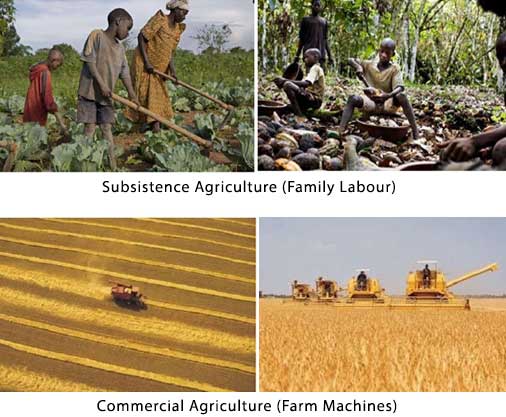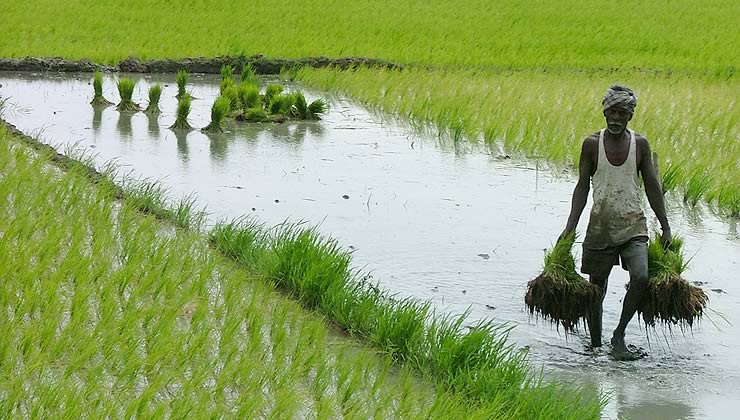Exactly How Commercial Farming vs Subsistence Farming Influences Food Protection Worldwide
Wiki Article
A Comprehensive Appearance at the Challenges and Advantages of Modern Farming
Modern agriculture stands at the crossroads of development and sustainability, offering a multitude of chances and challenges. The course forward requires a mindful evaluation of these characteristics, welcoming stakeholders to think about the potential for transformative modification in farming practices and plans.Technical Advancements in Farming
Technological advancements in farming have transformed the agricultural field, driving enhanced efficiency and effectiveness. Advancements such as precision farming, automation, and biotechnology have transformed conventional farming practices, permitting more successful and sustainable procedures. Precision farming makes use of GPS innovation, sensing units, and data analytics to maximize field-level management pertaining to crop farming. This technique enables farmers to use inputs like water, plant foods, and chemicals a lot more judiciously, lowering waste and reducing costs while boosting returns.Automation in farming has further pushed the market ahead, with the introduction of autonomous tractors, drones, and robotics. These modern technologies decrease labor needs and boost operational rate, enabling prompt planting and harvesting. Drones, specifically, provide useful aerial imagery and information, aiding farmers in checking crop health and wellness and detecting concerns early.
Biotechnology has also played an essential duty ahead of time agricultural methods. Genetically changed microorganisms (GMOs) have been developed to improve crop resistance to illness and parasites, minimize dependence on chemical treatments, and improve dietary web content. This technology adds to food security and satisfies the needs of an expanding global populace. Jointly, these technical developments have actually prepared for a much more resilient and lasting farming future.
Environmental Challenges
Farming faces several ecological challenges that threaten its sustainability and efficiency. The lasting stability of farming land is jeopardized, requiring the fostering of more lasting techniques.Water shortage is another considerable obstacle, especially in regions where agriculture greatly depends on irrigation. Climate modification is heightening this concern, changing rainfall patterns and increasing the frequency of dry spells. Reliable water monitoring systems, such as drip watering and rainwater harvesting, are critical to reduce these effects, yet their implementation continues to be irregular throughout various areas.
Moreover, agriculture is both a target and a factor to climate change. It represents a substantial share of greenhouse gas discharges, largely from animals production and rice growing. Transitioning to low-emission farming techniques, such as precision farming and agroforestry, can aid lower this impact. Nonetheless, these approaches call for significant investment and technological expertise, posing navigate to these guys a barrier to prevalent fostering. Resolving these environmental challenges is vital for making certain a lasting farming future.

Financial Impacts
The financial effects of contemporary farming are profound and diverse, influencing both regional and global markets. Breakthroughs in technology and manufacturing methods have actually substantially boosted farming efficiency, leading to extra efficient food supply chains and minimized costs for customers.The capital-intensive nature of modern farming calls for significant investment in equipment, plant foods, and genetically changed seeds, which can be monetarily challenging for small-scale farmers. Furthermore, international market variations can influence the success of agricultural exports, making economies reliant on agriculture at risk to financial instability.
Additionally, subsidies and profession plans in developed countries can misshape market costs, impacting competitive balance and potentially disadvantaging farmers in developing countries. On the whole, while modern-day agriculture drives financial development, it also requires navigating complex financial landscapes to ensure fair and sustainable growth.
Social Effects
While modern agriculture has actually brought around significant improvements, it likewise presents different social implications that require factor to consider. As business farming entities significantly control the agricultural landscape, smaller ranches often struggle to complete, leading to the disintegration of country neighborhoods and typical farming techniques.
Such methods might likewise restrict consumer options and reduce the capability of neighborhood neighborhoods to manage their food resources. As these social ramifications unravel, it ends up being crucial to address them to guarantee fair and lasting agricultural growth.
Future Directions
Looking in advance, several appealing opportunities for contemporary agriculture could attend to the obstacles faced today while cultivating sustainable development. Developments in innovation, such as accuracy farming, supply the prospective to maximize resource use and boost review effectiveness. By using information analytics and maker discovering, farmers can make enlightened decisions pertaining to plant administration, leading to decreased input expenses and minimized ecological effect. Furthermore, the integration of renewable resource resources into farming methods might significantly decrease dependency on fossil gas and add to lower greenhouse gas discharges.Biotechnology likewise holds immense promise for the future of farming. Genetically changed organisms (GMOs) and genetics editing and enhancing methods, like CRISPR, could improve plant durability versus environment change, pests, and illness, hence improving food safety and security. Diversifying plant ranges to include more nutrient-dense and climate-resilient options could bolster both eco-friendly security and human nourishment.

Conclusion
Modern farming, characterized by technological innovations, provides both obstacles and chances. commercial farming vs subsistence farming. Dealing with these complexities requires a change in the direction of lasting methods that balance performance with ecological stewardship and social equity, therefore guaranteeing a resilient future for worldwide farming systems.Modern agriculture stands check my site at the crossroads of development and sustainability, providing a wide variety of chances and challenges. In addition, worldwide market variations can influence the productivity of agricultural exports, making economic situations reliant on agriculture susceptible to economic instability.
In addition, the extensive usage of innovation and mechanization in agriculture has led to a decline in farming employment opportunities.Looking in advance, numerous promising avenues for modern agriculture can deal with the obstacles faced today while promoting sustainable development. commercial farming vs subsistence farming.Modern agriculture, characterized by technological advancements, offers both challenges and chances
Report this wiki page